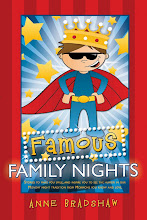by Rebecca Talley
In anticipation of writing my next novel, I've been reading and studying the hero's journey. It's been interesting reading. I have The Hero with a Thousand Faces by Joseph Campbell, but I'm not sure I'm smart enough to understand him. I also have The Writer's Journey by Christopher Vogler which is an examination of Campbell's work but in much easier language.
I've always thought the hero's journey only applied to epic fantasy or science fiction. You know, the really big stories like Star Wars, but what I've learned is that the journey applies to all stories. In fact, I've been able to see it in my current work-in-progress which is LDS women's fiction.
Basically, the hero's journey is how a character grows and changes because of the road he travels in your story. He doesn't have to go to distant planets or live in a fantastic world, he can be an ordinary person in contemporary society who faces a crisis and changes because of it.
ACT 1
1. OrdinaryWworld-- where your character is when the story begins
2. Call to Adventure--can be a phone call, letter, something that changes the status quo.
3. Refusal of the Call--character doesn't want things to change, doesn't think his world needs to change.
4. Meeting with the Mentor--this could be a good friend, a parent, a bishop, someone who counsels the character about the change.
5. Crossing the Threshold--the point where things change, the character enters into a different place (does not have to be a physically different place).
ACT 2
6. Tests, Allies, Enemies--the character meets people along the way who either help or hinder him, he also faces tests to see if he's committed to his journey.
7. Approach to the Inmost Cave--the character must prepare for his big ordeal, also known as the belly of the whale.
8. The Ordeal--this is the crisis, the character faces his greatest fear (not to be confused with the climax).
9. Reward--character survives the crisis, has changed, may have an epiphany, he gains new knowledge.
10. The Road Back--reutrns to ordinary world with his new knowledge and the ability to implement that new knowledge.
ACT 3
11. Resurrection--climax (similar to crisis but even bigger), he goes through a last test to make sure he has learned from his journey.
12. Return with Elixir--makes the circle back to his original place but now he has new knowledge, he's changed, he's different, he shares his knowledge with others.
George Lucas implemented the hero's journey in Star Wars and it's easy to see how it applies. Luke Skywalker is the reluctant hero thrust into a new world. He learns and grows. He has a mentor. He learns to trust in the new elixir which is the force.
For fun, see if you can apply the hero's journey to The Wizard of Oz. Next, try to apply it to your own story and see how it works out. Of course, always be true to your story and tell the story that's in your heart, but you may find the hero's journey will help you to better tell that story.
For more writer's tips check out my website http://www.rebeccatalley.com/.

















2 comments:
Great tips, Rebecca!
This is awesome! Thanks Rebbecca!
Post a Comment